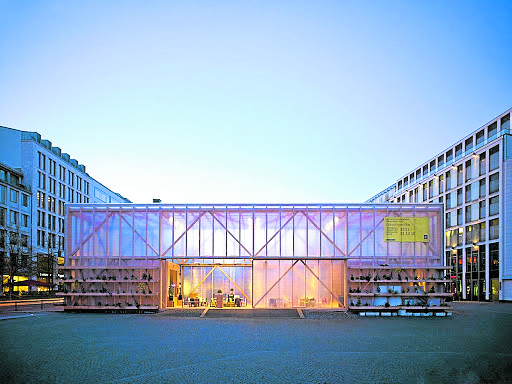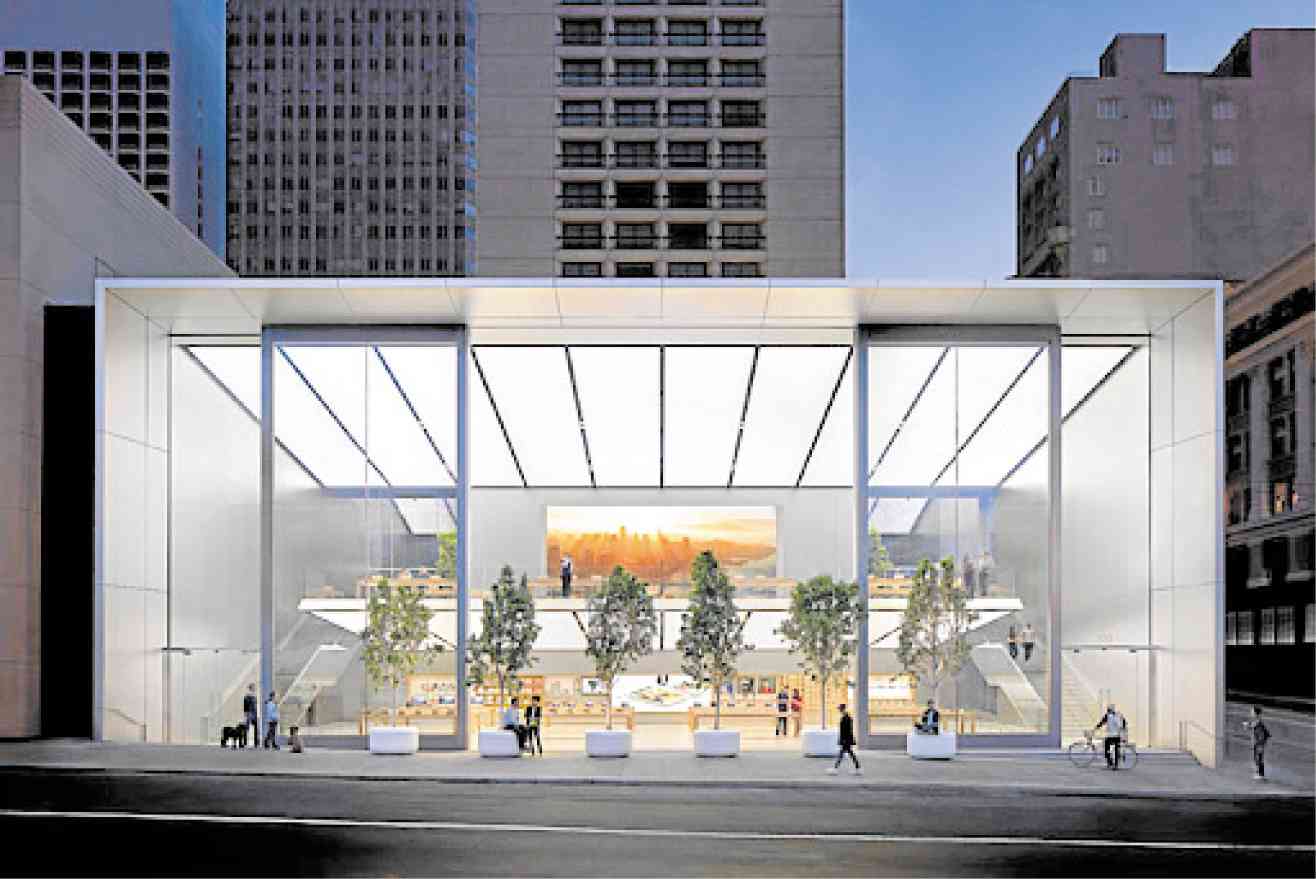Enjoying the softness of diffused light

In Frankfurt, Germany, this temporary pavilion constructed from a beechwood frame is used for exhibits, talks and workshops.
I was in Los Angeles some two years ago for an architecture batch reunion. Being the architects that we were, we went around LA on a tour of its notable buildings. One of our stops was the gallery spaces of the contemporary museum, The Broad, located downtown along Grand Avenue.
It was my first time there, and while I didn’t find the place extraordinary, I did enjoy the vast display of colorful pop art that seemed to jump out of the walls. Looking around, my eyes traced the lines of the architecture and took notice of its ceilings, the concrete diamond pattern reminding me of expanded metal mesh with the hollow spaces between them, recessed, and white with light.
This whiteness was from a translucent material that allowed light to pass through softly, much in the way sunlight would filter through a veil of clouds. The museum’s gallery spaces were brightly lit, with track lights that focus on the works of art, producing highlights and grabbing our attention.

Apple’s San Francisco store is almost a giant box diffuser in itself, considering its matte reflective surfaces in light colors.
Importance of lighting
This is classic museum lighting, wherein natural light is manipulated and diffused, and artificial light is carefully designed to emphasize shapes, shadows and colors in a quality that is realistic and accurate, inviting the guest to learn and explore. Here, the lighting directs and invites.
In filmmaking, cinematographers give great importance to the lighting of each scene because it helps awaken feelings that support the film’s storyline. Thus, the ability to manage the characteristics of light is a useful skill for creating a particular atmosphere. Here, the lighting elicits emotions.
The intensity and direction of light affect how people understand shape and color. Strong directional lights create shade and shadow, producing sharp contrasts. This type of lighting induces feelings of drama, isolation, fear and vulnerability. It is the kind of light that can isolate you from your surroundings.
Some museums use this kind of lighting when exhibits are small and an intimate distance is required to best appreciate a subject. Filmmakers use this effect for filming drama, suspense or horror movies. This is the kind of lighting you’d have in your bedroom at home, while reading in bed.
Positive emotions
Like my Broad museum experience, diffused lighting is the most comfortable and inviting. No harsh light streams, no dark shadows. Diffused light is flattering, and the very reason everyone scrambled for “zoom lights” when online meetings became a thing. It tempers angles, de-emphasizes crevices, brightens dark areas, softens textures and visually expands the perception of space.
“Maaliwalas” as they’d say in Filipino. Diffused lighting is suggestive of positive emotions. It conjures a sense of well-being, of lightness, a quiet joy and even of happiness. In retail spaces, it makes shopping more pleasurable because it minimizes the effort to see and appreciate details, due to the absence of shadows. In the workspace, it reduces problems relating to tired eyes, thanks to the reduced glare from light fixtures and their reflections.
Diffused light can be created through many different methods or techniques. In building exteriors, light shelves—those horizontal ledges you find between windows that separate the lower openings from the higher one or the “transom” windows—bounce up the downward streaming sunbeams and then redirect them into the ceilings of interior spaces, which then again throw the light back down in a diffused manner. Horizontal louvers, plantation shutters and other horizontal blinds that are installed as window treatments, perform the same purpose of deflecting direct light.
Better diffusion
For better diffusion, explore the use of non-glossy and textural surfaces. Unlike mirrors which are highly reflective and bounce off light without shattering or deflecting its beam, textured surfaces will scatter light beams. Often unseen to the naked eye are the fine, irregular surfaces that rebound light into different directions, thus scattering it.
Light-transmitting building exterior surfaces, like frosted or smoked glass, acrylic and polycarbonate, have become more popular in recent years as exterior cladding material. While their use as full “skin” to a structural frame is questionable given the heat transmission in our tropical climate, certain portions of our building envelope can be fully treated with these opaque surfaces.
The same materials when used for skylights and roof lanterns can create a ceiling light box effect. On smaller areas, translucent materials can be used as panels for doors and windows, especially when the clear visual connection between the spaces is not necessary.
Cove lights are a good way to create diffused artificial light. They throw light beams onto the ceiling to be dispersed downward again. The result is a mellow light that can be further softened or made more severe through the positioning of the fixture. Suspended lamps equipped with a diffuser and oriented to throw light upward create a similar effect.
Sheer material like silk organzas, tergale, a thin muslin or even cheesecloth can be used as fabric for window treatments like shades or curtains. Because of their tight weaves and translucency, they diffuse light like a veil of clouds would. A room with draped fabric and its resulting soft light expresses a gentle comfort that I find unparalleled in creating a nurturing, delicate interior space. During our tropical summers of harsh sunlight, this works wonderfully in the daytime.
As I sit in my work room looking out, I get this pleasant feeling. It’s the softness in the sunlight: the clouds are doing a good job of filtering the sunbeams. It’s soft and pleasant.
I hope you get the same feelings as I do when you come across a cloudy but bright day. No silver linings, but lots of bright, white light.


